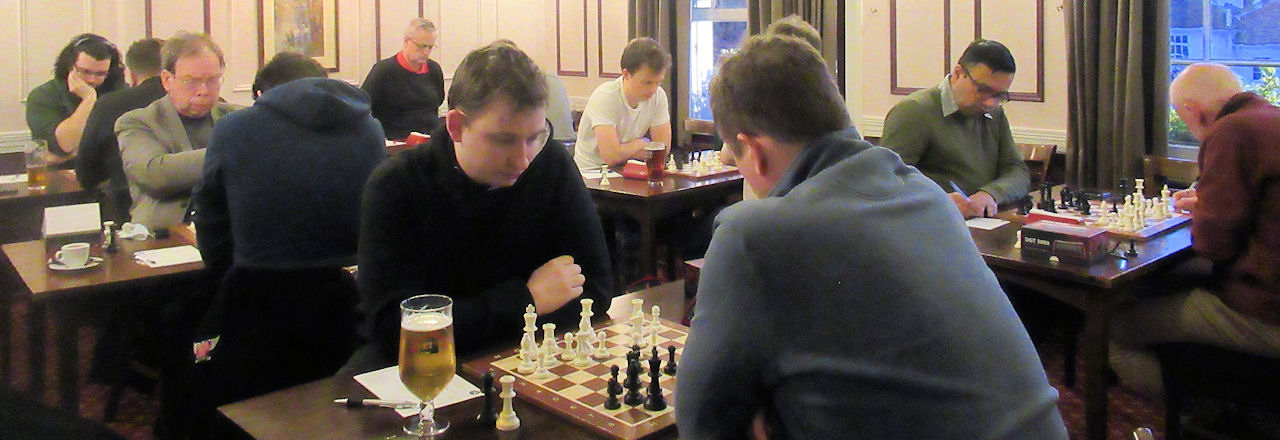First a bonus Puzzle of the Week. You’ll find the solution within the annotations below, but do have a go at solving it before you move on.
Black to play his 32nd move in the game below: how would you continue in this position?
I’m currently researching former Richmond Chess Club President Thomas Francis Lawrence, who was one of England’s strongest players for a couple of decades before the First World War. Like many others from his period, several of whom had connections with chess clubs in this area, he’s largely forgotten now, although two of his games, both of which he lost, have achieved some fame.
This game, played in the 1911 Anglo-American Cable Match, was the cause of some controversy at the time. Lawrence was matched against the enigmatic and brilliant Albert Whiting Fox (wiki).
The Brooklyn Eagle erupted into paroxysms of excitement, proclaiming that it will hold its own by comparison with the most masterly examples of international chess and will be rated as one of the finest specimens of ending produced in over the board play.
Fox’s move in the position above was a brilliantly creative concept, but there was a flaw in his otherwise impressive analysis which puts the win in doubt, and Lawrence could also have maintained equal chances by declining the sacrifice in a different way. Furthermore, as the world champion Emanuel Lasker pointed out, he had a much simpler way to win the game.
Here, then, is the game. Click on any move for a pop-up window.
You can discover a lot more about the game via Edward Winter here.
And congratulations if your choice in the top diagram was Qd6!: you found the best move, just as Lasker did. If you chose Rxh2+! – close but not quite the best move: you’re showing a lot of talent though. If you, like Albert Whiting Fox, played Ba6!?, you’re probably a crazy genius!
What can you learn from this game?
- The pawn formation after the trade on f6 is an important one to understand if you play open Sicilians with either colour.
- In some positions a capture like, in this game, gxf6, might leave your king fatally weak (my pupils know all about the Double Freddie Attack), but in other positions, and this is a good example, if you have enough central control, you can use the open g-file to launch a campaign against the enemy king.
- Make sure you calculate simple tactics well rather than wasting time trying to calculate long and complex variations. Don’t be Crazy Like A Fox, play common sense chess like Manny Lasker. In other words, remember the acronym KISS: Keep It Simple, Stupid!
Maybe I’ll show you Lawrence’s other Famous Loss another time. Or maybe I won’t. You’ll have to wait and see.
You’ll be able to find out a lot more about our former President in future articles on British Chess News. I’ll let you know when they’re published.

Pingback: Minor Pieces 42: Thomas Francis Lawrence Part 2 - British Chess News